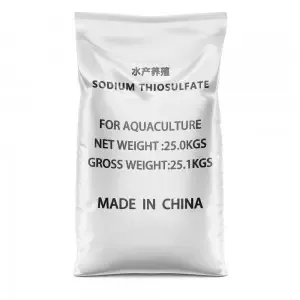



what chemical is used to disinfect water
Water disinfection is a crucial process in ensuring safe drinking water and preventing the spread of waterborne diseases. Among the various methods used for disinfecting water, chlorine is the most widely employed chemical. This article explores the role of chlorine in water disinfection, its advantages, and considerations for its use.
Chlorine has been used for more than a century as a primary disinfectant due to its effectiveness in killing a broad spectrum of pathogens, including bacteria, viruses, and protozoa. When added to water, chlorine reacts with the organic and inorganic materials present, monitoring its residual concentration to ensure ongoing protection after treatment. The typical form used for disinfection includes chlorine gas, sodium hypochlorite (liquid bleach), and calcium hypochlorite (granular or tablet form).
One of the key advantages of chlorine is its ability to provide residual disinfection. This means that even after the initial treatment, chlorine remains in the water supply, continuing to eliminate pathogens that may enter the system later. This residual effect significantly contributes to public health safety, especially in large-scale distribution systems.
In addition to its efficiency, chlorine is relatively cost-effective. Its widespread availability and ease of application make it a go-to choice for municipal water treatment facilities around the world. Furthermore, it is capable of addressing various water quality issues, including taste and odor control, which can improve overall consumer perception of water safety.
what chemical is used to disinfect water

However, the use of chlorine is not without its concerns. When chlorine reacts with natural organic matter in water, it can form disinfection by-products (DBPs), some of which may pose health risks if consumed in high concentrations over extended periods. Common DBPs include trihalomethanes (THMs) and haloacetic acids (HAAs). As a result, regulatory agencies closely monitor chlorine levels in public water supplies to minimize these potential hazards.
Another consideration is the effectiveness of chlorine against certain pathogens. While it is highly effective against most bacteria and viruses, some resistant pathogens, such as Cryptosporidium, require additional treatment methods, such as ultraviolet (UV) light or filtration in conjunction with chlorination.
In conclusion, chlorine remains the primary chemical for water disinfection worldwide due to its effectiveness, cost-efficiency, and ability to provide residual protection in water systems. However, the potential formation of disinfection by-products and the need for complementary treatment strategies highlight the importance of a comprehensive approach to water treatment. The continued research and development of safer and more effective disinfection methods will further enhance public health protection in the future.
-
Why Sodium Persulfate Is Everywhere NowNewsJul.07,2025
-
Why Polyacrylamide Is in High DemandNewsJul.07,2025
-
Understanding Paint Chemicals and Their ApplicationsNewsJul.07,2025
-
Smart Use Of Mining ChemicalsNewsJul.07,2025
-
Practical Uses of Potassium MonopersulfateNewsJul.07,2025
-
Agrochemicals In Real FarmingNewsJul.07,2025
-
Sodium Chlorite Hot UsesNewsJul.01,2025










